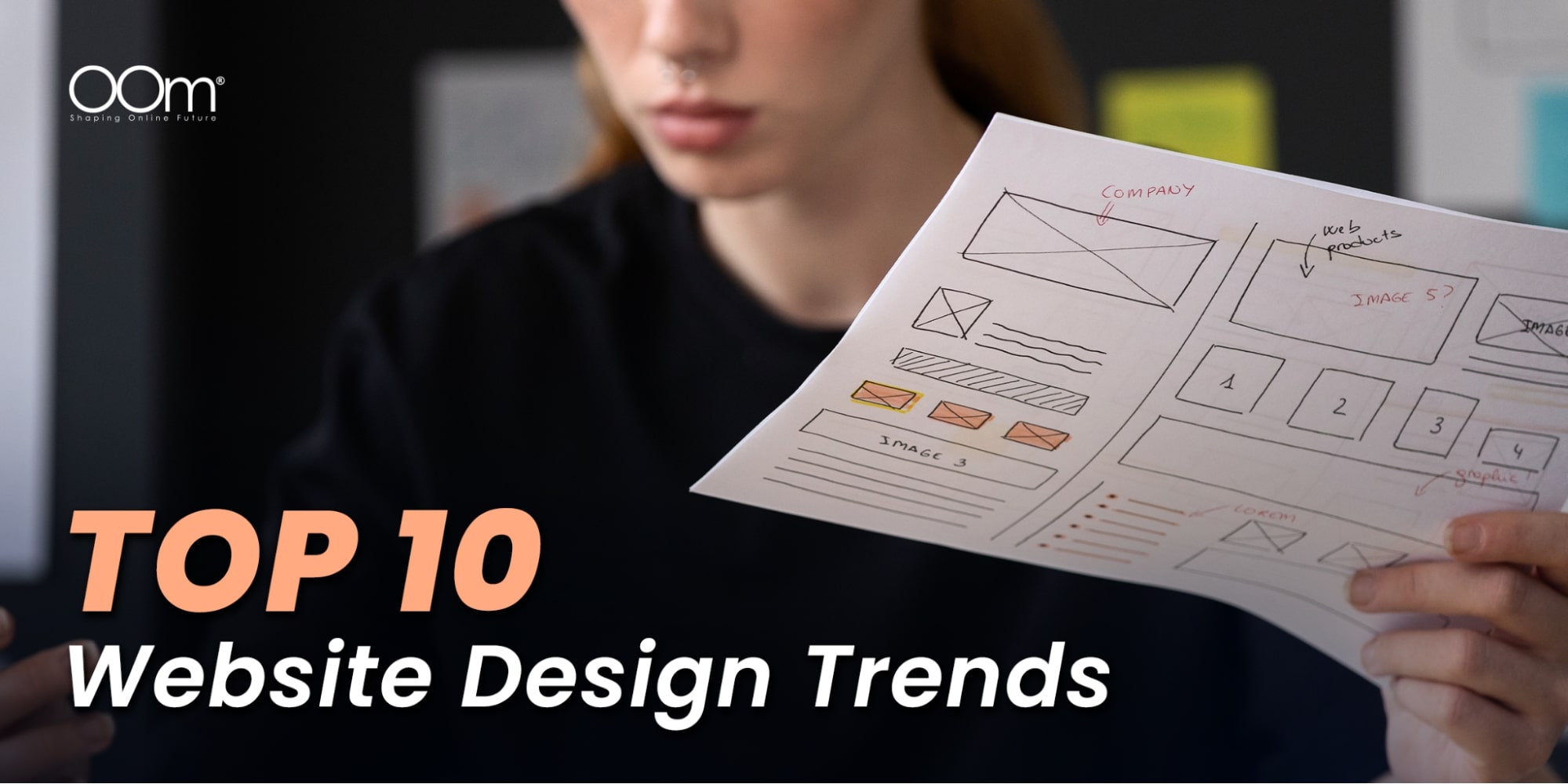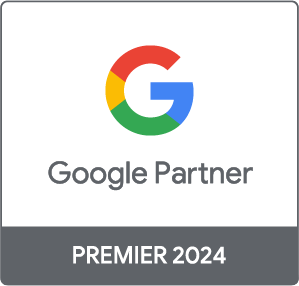
As the online realm continues to evolve, so does the landscape of website design. It is developing at a rapid pace, unveiling a plethora of trends that promise to redefine the very fabric of the online experience.
Buckle up as we delve into the captivating world of the digital landscape, where design is not just seen but experienced.
The Importance of Good Website Design
Your website is often the first point of contact with potential customers and a visually appealing and well-organised design creates a positive first impression, instilling confidence in visitors and encouraging them to explore further. A well-designed website also ensures that visitors can easily navigate and find the information they seek.
Furthermore, consistency in design elements, such as colours, fonts, and imagery, helps reinforce your brand identity, building brand recognition.
Perhaps the most important of it all is that a good website design with clean code, proper structure, and relevant content is more likely to rank higher in search engine results. This, in turn, increases the visibility of your website to potential customers.
Top Web Design Trends 2024
1. Dark Mode

Picture this: a sleek website draped in the elegance of dark hues. The use of dark colour schemes, typically with dark greys or blacks as the predominant colours, exudes a sense of sophistication and modernity. This design choice can create a visually appealing and immersive experience for users.
Dark mode has been widely embraced by major operating systems, websites, and popular apps. Platforms like the Apple website, iOS, Android, Windows, and macOS, as well as applications like Twitter, YouTube, and Instagram, have all incorporated dark mode options, reflecting its mainstream acceptance.
But the dark mode is not just a visual delight; it also boosts user comfort, reduces eye strain, and conserves the device’s battery. Expect to see more brands embracing this stylish and functional website design trend.
2. Kinetic Typography
Words coming to life on the screen — that is the allure of kinetic typography. This top-rated website design trend adds a dynamic touch to content, engaging visitors with visually appealing text animations. By animating words, phrases, or even individual letters, brands can convey emotions, emphasise key messages, and infuse a sense of energy and vitality into the content.
Motion in typography also allows for the establishment of a visual hierarchy. Brands get to control the timing, speed, and direction of text animations to guide users’ attention, enhancing overall readability while ensuring that users focus on the most critical elements of the content.
In 2024, more brands will jump on the kinetic typography trend and websites will be alive with words that dance and captivate.
3. Modern Minimalism

Clean, crisp, and clutter-free — the mantra of modern minimalism. This aesthetic philosophy strives to create a visually uncluttered and streamlined user experience, achieving functionality and following user-centric design principles.
By removing extraneous details, distractions, and superfluous design elements, websites can guide users’ attention to the core content, increasing overall usability. Additionally, white space serves as a deliberate design choice to create balance, spotlight key elements, and amp up visual appeal.
We anticipate a surge in brands adopting this website design trend to offer users a seamless and intuitive experience.
4. Y2K Effects

Y2K effects, inspired by the aesthetics of the early 2000s and the turn of the millennium, have staged a vibrant comeback in the world of website design. This nostalgic design trend draws from the bold, futuristic, and often eccentric elements that defined the Y2K era. Think striking colours, quirky animations, and a dash of retro-futurism. This latest web design trend adds a playful touch to websites, creating a memorable and visually stimulating experience for users.
Embracing the tech-centric spirit of the Y2K era, pixel art and glitch effects make a frequent appearance in this design trend. Given the technological advancements of the Y2K era, multimedia integration is a key aspect as well. Video backgrounds, animated GIFs, and other multimedia elements contribute to a visually rich and immersive user experience.
Whether used sparingly or embraced fully, Y2K effects add a touch of nostalgia and excitement, creating websites that stand out.
5. Interactive Storytelling

Websites are becoming digital storytellers and interactive storytelling weaves a captivating narrative, involving users in a dynamic experience. By incorporating clickable elements, animations, or user-triggered events, websites create an environment where users become co-creators of the narrative, fostering a deeper connection and sustained engagement.
Make sure to leverage multimedia elements to intensify immersion. Through the integration of videos, animations, sound effects, and interactive graphics, websites can create a multisensory experience that fully engages the user’s attention and emotions.
Brace yourself for websites that unfold stories, keeping visitors hooked from the first click.
6. Oversized Text

Oversized text is a bold and impactful typographic choice that transcends traditional design norms. This website design trend involves using larger-than-usual text elements to create a powerful visual statement, draw attention, and enhance the overall aesthetics of a webpage.
Contrary to the assumption that larger text may compromise readability, well-executed oversised text ensures that it is easily legible, even from a distance or on smaller screens. This is especially beneficial for delivering important messages that need to be quickly absorbed. Moreover, consistent use of large, distinctive fonts creates a visual language that becomes synonymous with the brand.
Get ready for websites that make a bold statement through large and impactful typography.
7. Microinteractions
It is the small things that make a big difference in website design. Microinteractions serve to enhance the user experience by providing feedback, guiding interactions, and adding a touch of interactivity.
Whether it is a subtle hover effect, a button animation, or a loading spinner, these minute details help users navigate the interface more intuitively. Thoughtfully designed animations, transitions, or responses to user input also create a more enjoyable and visually engaging interaction, making the website feel dynamic and responsive.
As we move into 2024, expect websites to delight users with these meticulous design elements.
8. Gradient Colour Scheme

Say goodbye to flat colours; gradients are the latest web design trend back in vogue. A gradient colour scheme adds depth and dimension to web design, creating visually stunning and memorable interfaces.
Besides, the blending of colours, especially when using bold and contrasting hues, captures the viewer’s attention and adds an element of excitement to the overall design. It also provides ample opportunities for brand customisation. By selecting colours that align with a brand’s identity, websites can reinforce their brand presence and create a consistent visual language.
Look out for websites that use gradients to evoke emotion and enhance aesthetics in 2024.
9. Brutalism

Brutalism in website design is an unconventional and avant-garde approach that embraces raw, unpolished aesthetics to create visually striking and unconventional digital experiences. This trend challenges traditional design norms, offering a unique and memorable visual experience.
Brands intentionally avoid the use of polished graphics, intricate layouts, and elaborate colour schemes. Instead, they opt for a stark and utilitarian look that exposes the basic structure of the website. Simple, sans-serif fonts are commonly used, contributing to the overall visual language.
The brutalist website design trend prioritises functionality over aesthetics. While the visuals may appear unusual, the focus is on delivering a straightforward and efficient user experience.
10. Gamified Design

Turning websites into interactive games is the essence of gamified design. The goal is to enhance user engagement, motivation, and participation by leveraging the psychological aspects that make games inherently compelling.
Point systems where users accumulate points based on their activities or achievements, challenges or quests that users can undertake, and storytelling elements to create a narrative that unfolds as users progress, are some examples of gamified design.
In 2024, websites will evolve beyond static pages, inviting users to participate in an immersive digital journey.
Revolutionise Your Website Today
The world of website design is set to be a playground of innovation and creativity. Stay ahead of the curve by embracing these top-rated website design trends and let your online presence captivate, engage, and leave a lasting impression.
Not sure where to begin your journey? As a leading digital marketing agency with expertise that extends seamlessly into the realm of website design, OOm is poised to elevate your online presence and transform your digital landscape. Let our seasoned professionals blend creativity with technical prowess to craft a website that not only meets but exceeds the expectations of tomorrow’s digital audience.
